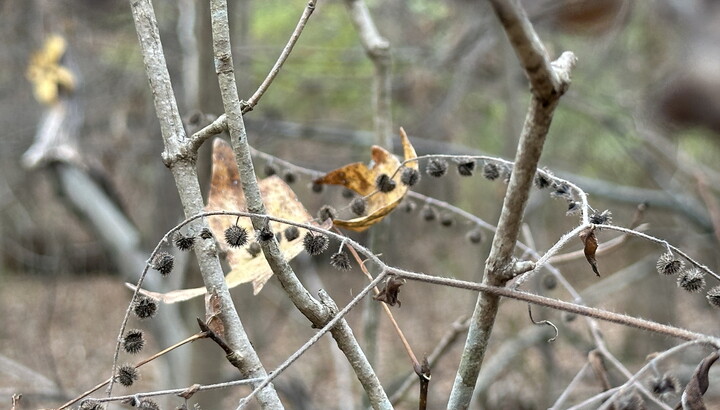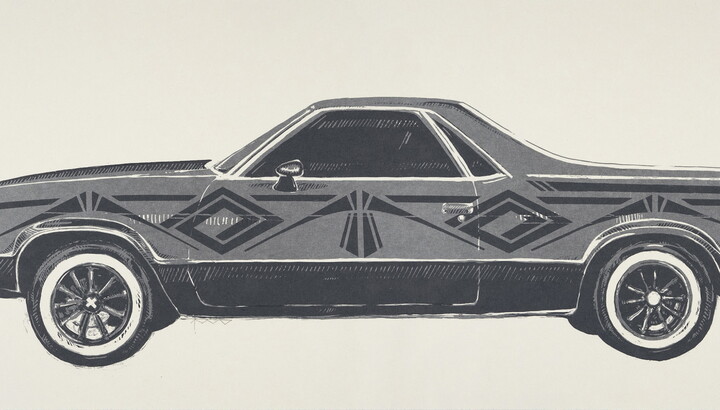The Carter Blog
Carter ARTicles
FROZEN! A good climate for photographs
Dec 21, 2021
We often consider the weather when we plan our daily activities, and we all enjoy sunny, warm days. The ideal temperature and humidity for our bodies is dictated by how we feel, and most people are comfortable at temperatures between 70 and 75 degrees Fahrenheit. These temperatures provide enough energy for our bodies to function properly and keep us alive.
For art, in general, and specifically for objects composed of organic substances, the energy of warm, mild temperatures may trigger chemical reactions that lead to their deterioration and eventual destruction. While this transformation does not occur over night, it may manifest in a couple of decades in physical changes in the objects, such as fading of the original colors, staining or yellowing, loss of luster or surface gloss, cracking, and fragility, among others. For museum and archive objects, such changes represent the loss of the physical integrity and aesthetic attributes that made them relevant and unique as collection items. This is the case with photographs.
Photographs are composed of an image-bearing binder that is usually made of gelatin and is supported by either paper or plastic sheets. They do not last long if they are kept in warm environments and are rapidly destroyed if the humidity is also high. Although the image particles of black-and-white photographs are not formed by organic compounds—they are made of silver metal—the minute size of these particles makes them prone to oxidation and subsequent destruction in humid environments. The degradation of the silver particles in black-and-white photographs results in image fading and overall discoloration or yellowing.
The Carter has a specially designed, state-of-the-art storage vault called the COOL Vault, where tens of thousands of black-and-white prints are preserved at a strictly maintained temperature of 60 degrees Fahrenheit and 40 percent relative humidity. Other types of photographs, such as 19th-century prints and negatives, and unique camera photographs, like daguerreotypes and ambrotypes, are also preserved in the COOL Vault. As hard as maintaining this vault sounds, this is the easy part of the Carter’s storage facilities; the preservation of color photographs and of most types of negative images requires a long-term commitment to maintain them at temperatures below freezing!
Color photographs are made of the same layers as black-and-white photographs, but instead of silver particles, the image is made of minute color-dye clouds, which are even more vulnerable to deterioration and eventual destruction at moderate temperatures than silver particles. The temperature of the COOL Vault is too warm for the long-term preservation of color photographs and images on plastic supports. These are stored in the COLD Vault at the Carter, a state-of-the-art facility maintained at 20 degrees Fahrenheit and 30 percent relative humidity. Built and designed with the highest standards in the conservation of cultural heritage, the Carter’s COLD Vault looks like a mega freezer: a large room perfectly insulated from the surrounding environment with special panels in the walls and ceiling to maintain subfreezing temperatures. As are all other storage and exhibition areas of the Carter, the COLD Vault is monitored 24 hours a day by the full-time engineers on staff. Overnight failures and repairs of any part of the large equipment necessary to maintain this cold climate are taken care of right away by the Museum’s engineers. Thousands of color photographs, along with black-and-white negatives, are preserved in pristine condition in the COLD Vault for future generations to enjoy.
The last part of the story about the special storage of photographic collections at the Carter is the free-standing explosion-proof freezers, maintained in a separate room, which are loaded with black-and-white negative images on the type of plastic support (cellulose nitrate) that was used until the mid-20th century. These photographs are not only chemically unstable, like the photographs stored in the COLD Vault, but they also emit corrosive gases as they deteriorate, which are harmful for the rest of the collection. For this reason, photographs on cellulose nitrate plastic support are segregated from the rest of the collection and stored in these freezers at a temperature of maximum 5 degrees Fahrenheit.
Collecting photographs and displaying them properly in the galleries are important achievements for cultural institutions that enable visitors to view and enjoy these works of art. However, the long-term preservation of photographs for the enjoyment of future generations requires a level of commitment and an amount of work that only a few institutions in the world are capable of . . . the Amon Carter Museum of American Art is one of them.
Explore the photography collection at the Carter!






